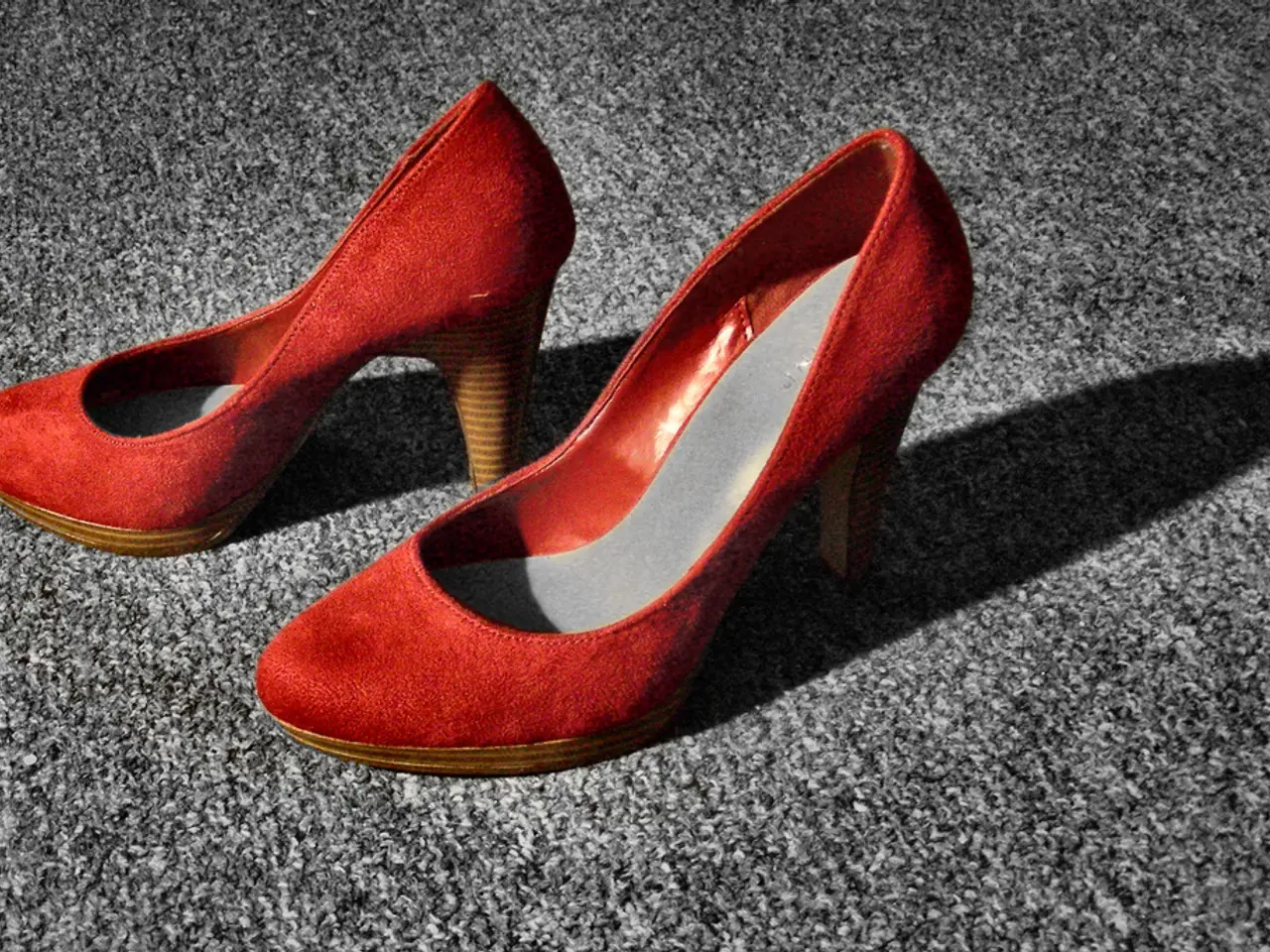Remedy for Misaligned Toes: A Guide
Toe deformities, such as Hallux Valgus (commonly known as a bunion), Schneider Bunion, Hammer Toe, and Claw Toe, can cause discomfort and affect one's mobility. This article explores the causes, symptoms, and treatments for these common toe deformities.
Hallux Valgus (Bunion)
Hallux Valgus is a toe deformity where the big toe tilts towards the outer edge of the foot, often caused by genetic predisposition, wearing tight or ill-fitting shoes, especially with narrow toe boxes or high heels, and foot structural abnormalities. Symptoms include a visible bump on the side of the big toe, pain, redness, swelling, and difficulty walking. Conservative treatments include wearing wider shoes, orthotics, cushioning pads, and stretches. In more severe cases, surgery (such as bunionectomy) may be necessary.
Schneider Bunion
Schneider Bunion is a specific type of bunion affecting the fifth metatarsal (outer side of the foot). It is caused by similar factors as Hallux Valgus but located on the fifth toe side, often from shoe pressure and structural problems. Symptoms include a bump on the outside of the foot near the little toe, pain, swelling. Treatment is similar to Hallux Valgus—shoe modifications, padding, orthotics, and possibly surgery if non-surgical care fails.
Hammer Toe
Hammer Toe is a deformity where the toes are bent, with the middle joint bent upward. This is caused by a muscle imbalance where muscles on the top of the foot overpower the weaker intrinsic muscles on the bottom. Risk factors include wearing tight shoes, high heels, foot injuries, arthritis, and foot arch abnormalities. Symptoms include a toe bent into a hammer-like shape, pain, corns or calluses on the top of the joint or tip of the toe, difficulty walking. Non-surgical care includes stretches, taping, exercises to strengthen muscles, wearing shoes with wide toe boxes, and cushioned pads. Surgery may be recommended if the toe becomes rigid or if conservative treatment fails.
Claw Toe
Claw Toe is similar to Hammer Toe but involves bending at the middle (PIP) and end (DIP) joints, causing the toe to curl downwards and the foot to press the top of the toes to the shoe. This is often caused by muscle imbalance, often linked to neurological or muscular diseases, arthritis, ill-fitting shoes. Symptoms include toes curling upside down or downward, causing pain, corns, calluses, and difficulty wearing shoes. Treatment includes shoe modifications, padding, orthotics, exercises; surgery if severe and painful.
Additional Related Deformities
- Mallet Toe: Bending at the distal (tip) joint of the toe, caused by tight shoes or injuries; symptoms include drooping of the toe tip; treatments range from shoe modifications to surgery in case of tendon damage.
- Curled Toes: General term for toes bent in a claw-like fashion; treated with shoe changes, orthotics, physical therapy, and surgery if needed.
A summary table for a clearer comparison is provided below:
|Deformity |Causes |Symptoms |Treatments | |--------------|------------------------------------|--------------------------------|----------------------------------------| |Hallux Valgus |Genetics, tight/narrow shoes |Bump on big toe, pain, swelling |Wide shoes, orthotics, padding, surgery | |Schneider Bunion|Similar to Hallux Valgus, lateral foot pressure |Bump near little toe, pain |Wide shoes, orthotics, surgery | |Hammer Toe |Muscle imbalance, tight shoes, injury|Middle joint bent upward, pain |Stretches, taping, wide shoes, surgery | |Claw Toe |Neurological/muscle issues, arthritis|Toes curl down, pain, corns |Shoe mods, orthotics, surgery | |Mallet Toe |Tight shoes, injury |Tip of toe droops, pain |Shoe changes, surgery if tendon ruptured|
Key preventive and management strategies across all deformities include wearing proper, well-fitting shoes with adequate toe space, doing foot and toe strengthening exercises, and addressing underlying conditions like arthritis or neuromuscular disorders early. If non-surgical treatments are insufficient, surgery tailored to the specific deformity and severity may be advised to restore function and reduce pain.
Improper footwear, such as shoes that are too tight or too short, can trigger toe deformities over time. Proper footwear, combined with regular foot care and early intervention for any underlying conditions, can help prevent and manage these toe deformities.
- The symbolic connection between science and our feet can be seen in the various medical-conditions and chronic-diseases that affect the toes, such as Hallux Valgus (Bunion) and Hammer Toe, which are often caused by wearing ill-fitting or tight footwear, demonstrating fitness-and-exercise and health-and-wellness practices play a crucial role in preventing these conditions.
- Schneider Bunion, another common toe deformity, is caused by similar factors as Hallux Valgus, further emphasizing the importance of footwear choices and foot structure health in preventing or managing medical-conditions affecting the toes.
- Proper footwear choices, regular exercise, and addressing underlying conditions like arthritis or neuromuscular disorders can help manage and prevent the development of toe deformities such as Claw Toe and Mallet Toe, highlighting the importance of adopting a holistic health-and-wellness approach that includes fitness-and-exercise for the feet.




